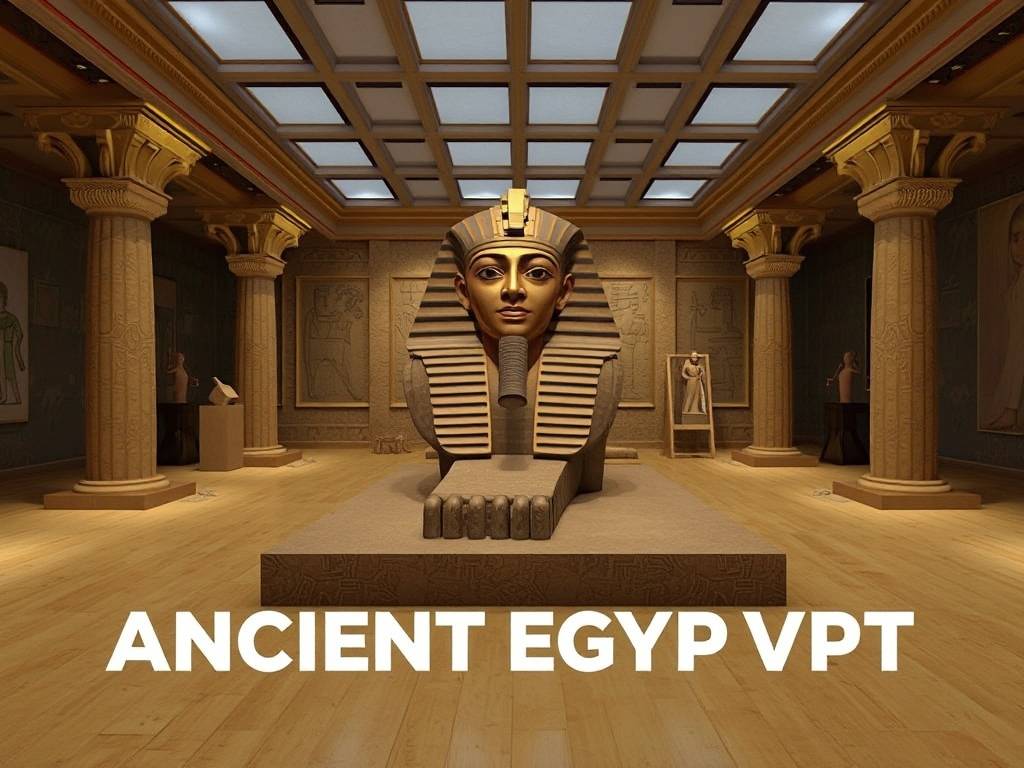Have you ever stood before the Great Pyramid and wondered how it felt to witness its construction? Or wished you could hold a ceremonial dagger meant for a pharaoh, not through a glass case, but in your own virtual hands? Welcome to the latest expansion for the critically acclaimed "Museum Simulator VR," a journey that transcends traditional gaming and even traditional museum visits. We are thrilled to unveil our most ambitious and immersive update yet: the "Ancient Egypt" exhibit pack. This isn't just an addition; it's a portal to the past, designed from the ground up for the unique capabilities of virtual reality.
This new expansion is built on a simple but powerful idea: true understanding comes from experience. We've moved beyond static displays and small information cards. Here, you are not a passive observer. You are an archaeologist, a historian, and an explorer, all rolled into one. The sands of time have been digitally swept away, inviting you to step into a world both awe-inspiring and intimately detailed. Every artifact has a story, and every environment holds a secret waiting for your discovery.
Your adventure begins the moment you step through the imposing stone gateway into the new Egyptian wing. The familiar marble floors of the main museum give way to warm, simulated sandstone. The air seems to shimmer with heat, and the distant sound of a ney flute and a gentle desert wind fills your ears. Before you, a grand, interactive timeline is etched into a wall, glowing with hieroglyphs. You can reach out and touch a specific dynasty, instantly transporting yourself to its most significant locations and artifacts. This is your starting point, your map to the wonders that await.

One of the core pillars of the "Ancient Egypt" experience is our revolutionary "Hands-On History" approach. We believe that the context of an object is as important as the object itself. Therefore, many of our key exhibits are not just for viewing. Take, for instance, the dazzling array of Tutankhamun's treasures. You can carefully lift the famous gold mask, feeling its virtual weight and admiring the intricate lapis lazuli inlay from every angle. But the experience doesn't stop there. A tools panel materializes beside you, offering a range of archaeological instruments. You can choose a soft brush and gently sweep away virtual sand from a newly "discovered" chest, or use a virtual stylus to trace the carvings on a sarcophagus, with each action revealing new layers of information about its symbolism and creation process.
This level of interaction extends to the very language of the ancients. In our "Decipher the Stones" module, you are seated before a large, fragmented Rosetta Stone replica. Your task is to piece it together. As you fit the fragments, the hieroglyphic, Demotic, and Greek scripts begin to glow. A virtual guide appears, explaining the significance of each script and teaching you to sound out simple words like "pharaoh" and "sun." By the end of the puzzle, you haven't just seen the Rosetta Stone; you've engaged with it in a way that makes its historical breakthrough feel personal and tangible.
Perhaps the most breathtaking feature of the new expansion is the "Monument Builder" series. Reading about the pyramids is one thing; virtually participating in their construction is another. You can select from three major projects: the Step Pyramid of Djoser, the Great Pyramid of Giza, and the Temple of Karnak. Each presents a unique set of challenges and insights. In the Giza plateau, you find yourself amidst a bustling, organized chaos. Granite blocks arrive on sleds. You can operate a virtual crane system, based on historical theories, to lift and position massive stones. The game intelligently guides your placement, but the physicality of the action—reaching out, grabbing the virtual ropes, and straining to maneuver the block—drives home the monumental effort involved. As you work, time speeds up and slows down, allowing you to see the structure rise over days and weeks in a matter of minutes, all while your AI-guided foreman explains the logistics, the workforce, and the religious significance of the alignment.
For those seeking a more mysterious and atmospheric adventure, the "Tomb Raider Excavation" module is a must-try. This is not about looting, but about the meticulous science of discovery, modeled after the work of Howard Carter. You arrive at a hidden entrance in the Valley of the Kings. Your tools are a brush, a trowel, a measuring grid, and your wits. The process is slow and deliberate. You must carefully clear debris, map your findings, and avoid damaging fragile artifacts. The tension is palpable when your light finally pierces a small hole into a previously sealed chamber. Peering inside, you catch the first glint of gold and the shadow of a chariot. The moment of discovery is recreated with such drama and reverence that it’s hard not to feel a shiver of excitement, a true VR museum experience that connects you to the thrill of archaeological history.
Beyond the grand monuments and golden treasures, we've dedicated significant space to the daily life of ordinary Egyptians. This is where our long-tail keyword philosophy comes to life, focusing on niche, deeply educational content. You can step into a faithfully reconstructed peasant's home along the Nile, smelling the bread baking in a clay oven. You can try your hand at scribal work, grinding pigments and practicing hieroglyphs on a piece of virtual papyrus. In the "Nile River Hub," you can captain a reed boat, learning how the river's currents and annual flood cycles were the lifeline of the civilization. These exhibits answer the questions that often go unasked in traditional museums: What did they eat? How did they travel? What was life like for the 99% who weren't pharaohs? It’s a complete cultural immersion.
A common question from our community is about the educational rigor of our exhibits. We want to assure you that every artifact, every architectural plan, and every narrative detail has been developed in close consultation with a panel of leading Egyptologists. From the correct way to mummify a body in our interactive "Journey to the Afterlife" exhibit to the precise agricultural techniques shown in the farming simulator, our goal is authenticity. This makes "Museum Simulator VR: Ancient Egypt" a powerful tool for students, educators, and lifelong learners. We've even built a "Lecture Hall" where pre-recorded talks from experts play regularly, and teachers can host virtual field trips for their entire class.
The social aspect of museum-going is also preserved and enhanced. In the multiplayer mode, you and your friends can explore the exhibits together. You can jointly solve a puzzle to open a secret chamber in a tomb, or one of you can act as the guide, explaining the significance of the Book of the Dead while the other examines the detailed papyrus. This shared discovery fosters collaboration and discussion, making history a social, interactive adventure. The ability to point out details to a friend in real-time, standing together in a virtual space, replicates and enhances the best parts of a physical museum visit.

As you conclude your tour, you return to the central hall of the Egyptian wing. The interactive globe now glows with a new pin in North Africa. Your personal "Curator's Log" has been populated with sketches, notes, and 3D models of every artifact you interacted with. You haven't just seen Ancient Egypt; you've touched it, built it, and deciphered it. "Museum Simulator VR" was always about bringing the museum to you. With the "Ancient Egypt" expansion, we've gone a step further. We've brought the past to life, not as a distant, static memory, but as a living, breathing world you can walk through, learn from, and truly feel a part of. This is more than a game update; it's a new standard for virtual cultural education and an unforgettable journey waiting for you to take the first step. The sands of time are shifting. Your adventure is calling.


















